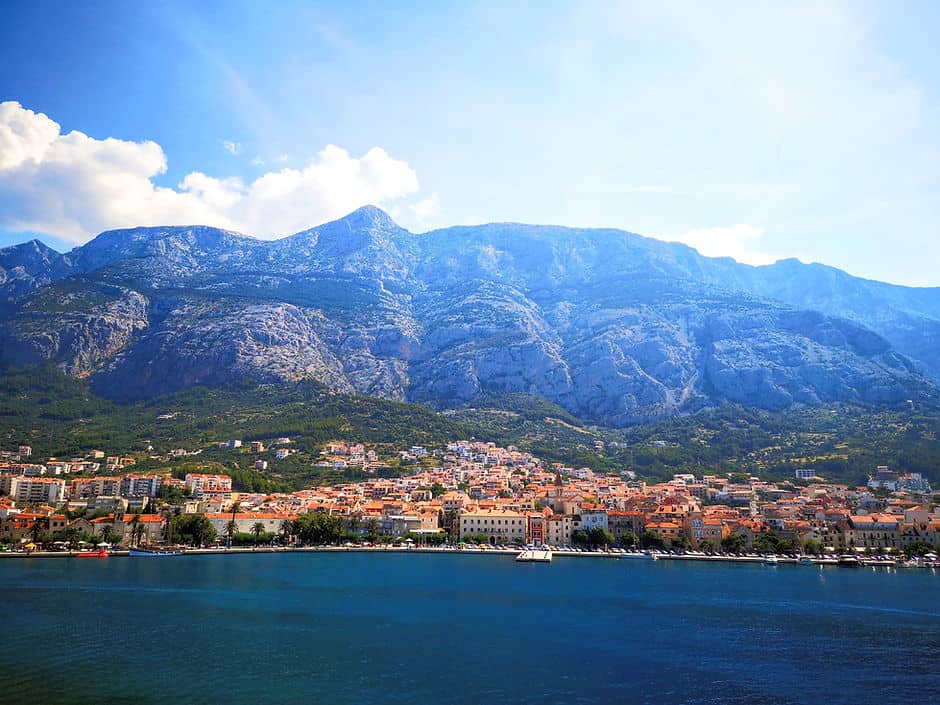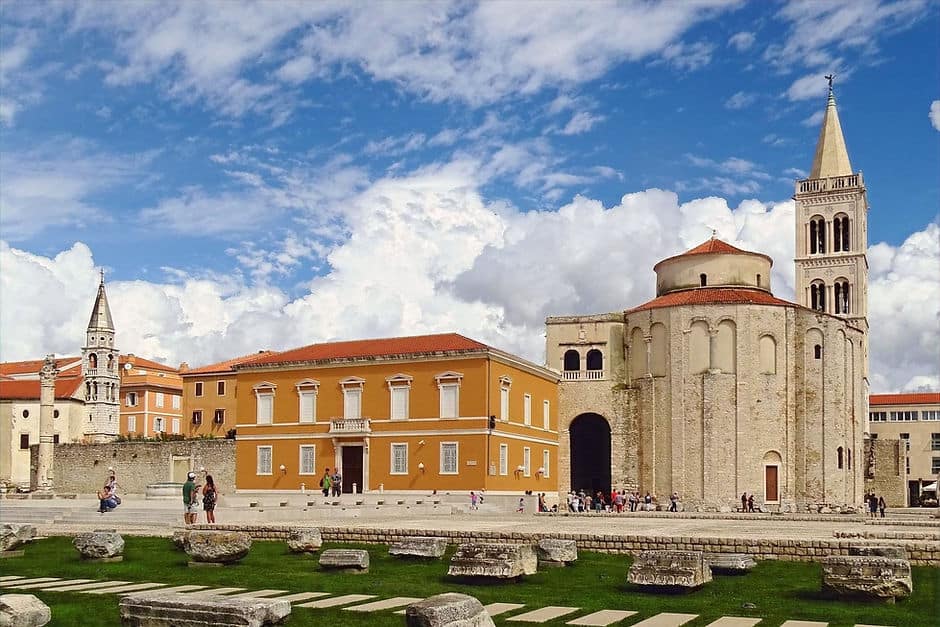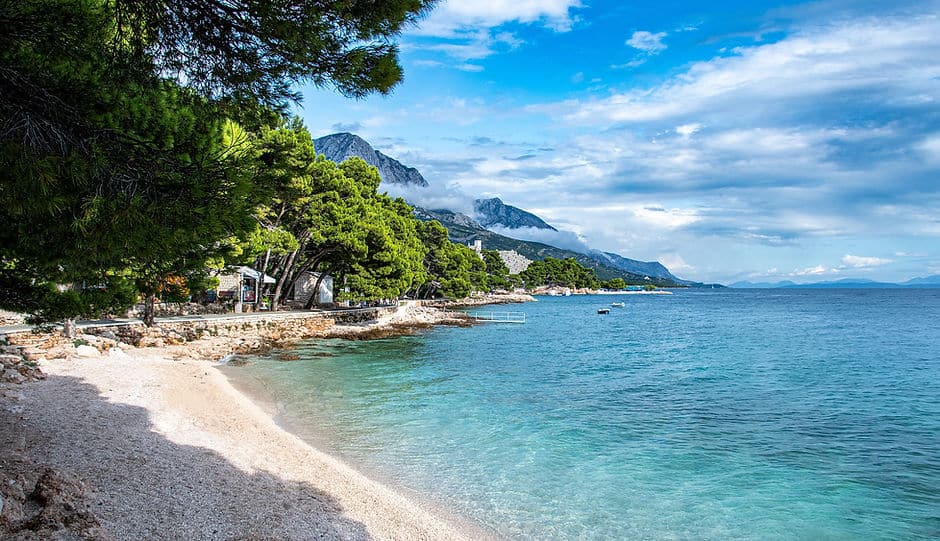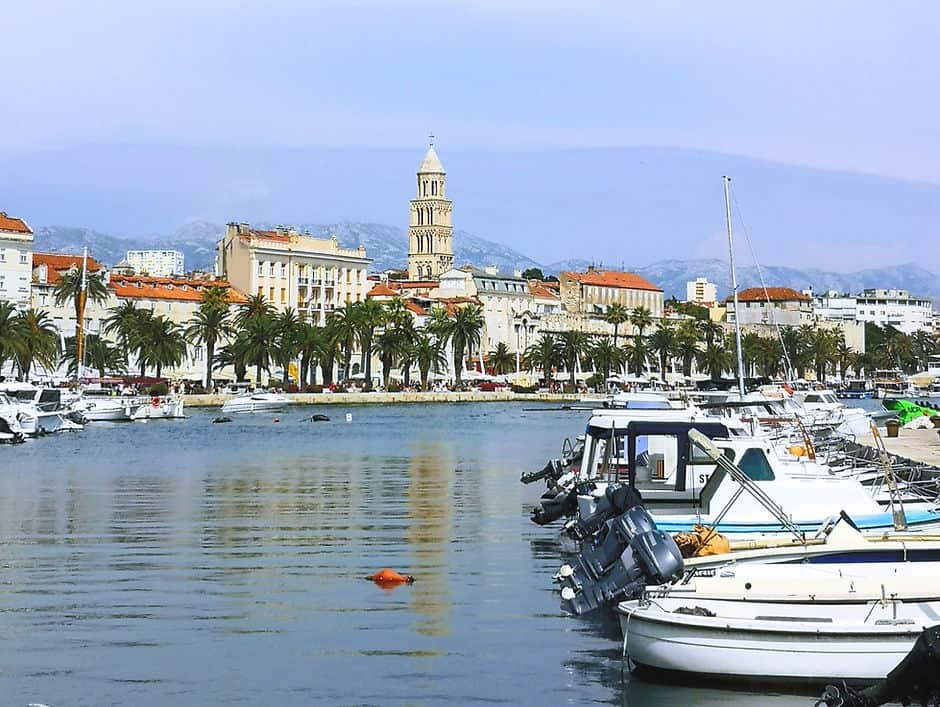
This post may contain affiliate links. I receive a small commission if you use these links, with no extra cost to you.
Split is located in Croatia’s Dalmatia region, on the coast of the beautiful Adriatic Sea. It is the second largest city in Croatia and is most well known for the impressive ruins of the Diocletian Palace. The Roman-Venetian Palace, together with historical buildings, fortifications and churches make Split an intriguing and beautiful city to explore.
Contents
Is Split worth visiting?
Split or Dubrovnik?
1. Visit Split’s historic centre
2. Stroll along Split’s Riva and the marina
3. Hike up to Marjan Hill for the best views over Split
4. Visit Split’s beaches
5. Take a day trip from Split
Is Split worth visiting?
Due to how well connected Split is (with excellent train, air, bus and ferry links), it is often considered as just a location to pass through, but it has so much more to offer than just a transit hub. So, before we jump into some of the best things to see and do in Split, let’s answer the most important question – is Split really worth visiting?
In my opinion, yes! Split is a great place to visit, whether you are enjoying a short city break, a family holiday or planning a road trip around Croatia, like we did. (See here for my two week itinerary around some of Croatia’s highlights).
You could easily pass the time with a couple of days just wandering through Split’s pedestrianised streets, admiring the Roman-Venetian architecture, walking around the marina, hitting the shops or taking it slow and spending a couple of hours with a long lunch.
Split is also perfectly suited as a destination to base yourself if you want to explore further afield – the travel connections in Split make day-tripping really easy. From Split, you can explore the town of Trogir and Krka National park, as well as the islands of Hvar and Brac.
Split or Dubrovnik?
Having been to both Split and Dubrovnik (although I only had one day in Dubrovnik, versus 4 days in Split), I enjoyed both and it’s hard to choose between them. Further down the Adriatic coast, Dubrovnik is much smaller than Split, but has bags of charm and character. Dubrovnik is known for its historic old town, encompassed by thick stone fortifications and is very popular with day trippers. If you were choosing between Split or Dubrovnik, it is best to take into consideration the locations of each place. Dubrovnik is in the south of Croatia, close to the border of Montenegro, whereas Split is more central. If you are planning to visit a few places during your trip to Croatia, and have a limited amount of time, Split may be better as you can easily visit Hvar, Brac, Zadar, Makarska and Krka and Plitvice National Parks from Split.
OK, so now you know why you should visit Split, here’s some of the best things to do in this beautiful historic city.
The Best things to do in Split, Croatia
1. Visit Split’s historic centre
Split is full of gorgeous Roman-Venetian Architecture and most of the sights are close together, in the centre of the city, so you can easily do your own walking tour at your own pace. If you want to learn a little more about the history of the buildings and the city, you can join a guided walking tour, or, if you are a Game of Thrones fan, take one of the Game Of Thrones tours, and visit some of the spots from the show.
As you’re wandering around the historic centre of Split, here’s some of the main sights you don’t want to miss:
Diocletian’s Palace Complex
Once inhabited by a Roman emperor, the Diocletian’s Palace sits within a large complex of the same name in the centre of the city. The impressive buildings that make up the palace complex are still the focal point of the city today, with many businesses operating both within and around the complex. In the square outside the palace itself, there is often live music playing at night, which is a great way to spend an evening.
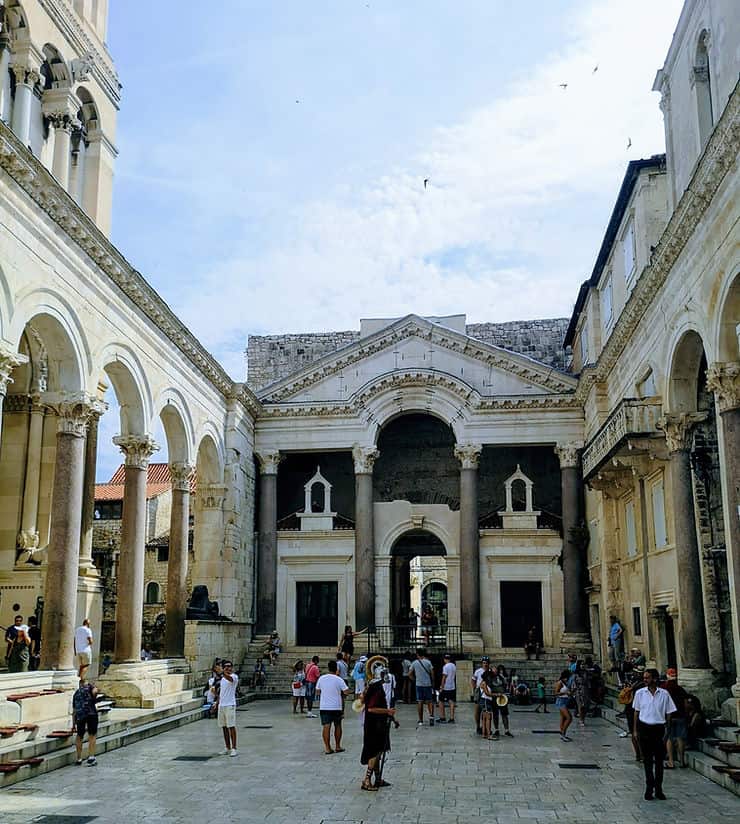
Golden Gate
This 4th century gate made out of Roman stone is the main entrance to Diocletian’s Palace. In front of the gate is Park Jospia, a small park with a bandstand where live music is played on the weekends. There are also market stalls which line the edge of the park.
People’s square (Pjaca)
There are so many restaurants and businesses surrounding this square, as well as impressive historical buildings. One of the main buildings is the 15th town hall which is now used as a museum. People’s Square is a great place to enjoy a long lunch or to sit with an ice cream and soak up the atmosphere.
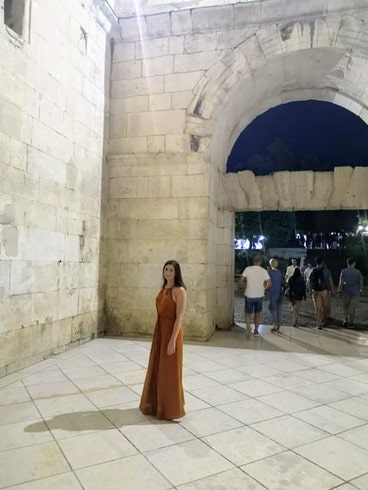
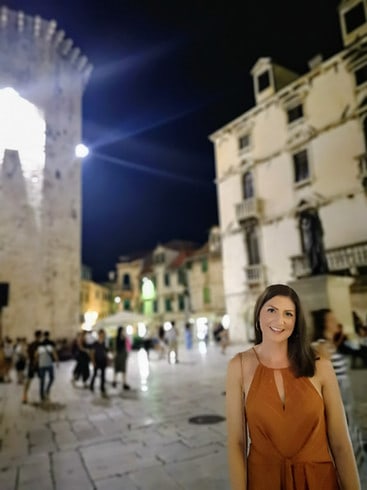
Golden Gate and People’s Square
Other important buildings within the palace complex are:
Diocletian’s palace cellars – The palace cellars are a must visit. Underneath the palace, the cellars have been turned into a small market, with several small stalls selling local crafts under the grand arches.
Saint Domnius Cathedral – Dating back to the 4th century, this Roman cathedral is one of the oldest in Europe. Tickets can be purchased to go inside the cathedral and you can climb up the bell tower for stunning views over the city. Note that the church closes to tourists during mass and other religious or formal events.
Jupiter’s temple – This small temple was built in the 3rd century and houses an Egyptian sphinx.
Platz der Republik – This large, picturesque square is surrounded by cafes and restaurants with seating spilling out into the centre of the square. The small streets surrounding this square are also full of shops and great places to dine.
It’s worth noting that if you want to visit inside some of Split’s historic temples and cathedrals, you can buy a combined ticket which gives you discounted entry to multiple sites. There are several options, depending on what you want to visit, so make sure you check at the ticket offices dotted around Split city centre.
If you are travelling Split on a budget, you don’t have to pay to visit inside the buildings. You can still admire them from the outside. Spending the day walking through the city, down little alleyways and admiring the architecture is one of the best things to do in Split, and it’s completely free!
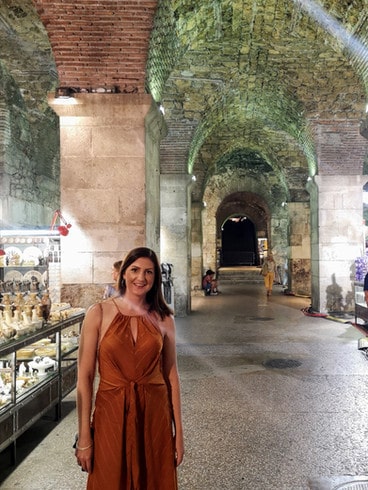
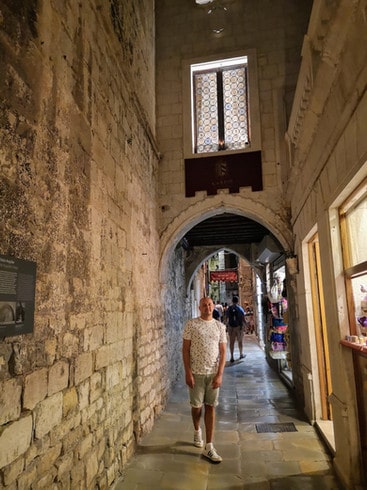
Diocletian’s Palace Cellars and wandering through the streets of the palace complex
2. Stroll along Split’s Riva and the marina
Split’s Riva (waterfront promenade) is lively all day and all night. There are market stalls on the waterfront and restaurants line the main boardwalk – perfect for watching the world go by. There’s also several benches under the trees to have a rest under the shade.
Further along the Riva is Split’s marina. The restaurants and bars near the marina are slightly quieter and more spread out than along the main boardwalk, so head this way if you want to sit somewhere a bit quieter.
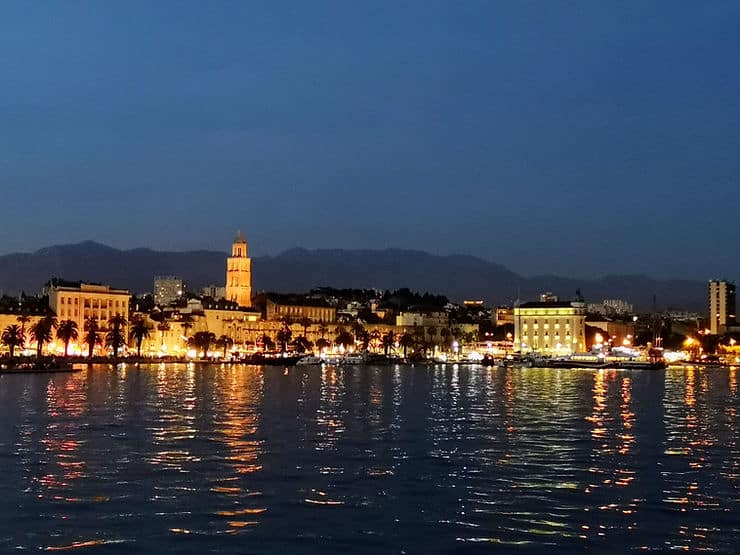
3. Hike up to Marjan Hill for the best views over Split
Another great free activity in Split is to walk up to the viewpoint at Marjan Hill. The Marjan forest park sits on the edge of Split, stretching out for 3km, surrounded by the sea. The best way to explore the forest park is on foot. You can either just walk up to the Marjan Hill Telegrin lookout point and return, or spend several hours exploring the whole forest. To start the walk to Marjan hill, follow the main boardwalk towards the marina, along the main road, then take the small pedestrian road of Solurat Ul. This road will take you to the bottom of the Marjan stairs, which is signposted.
You’ll first reach an observation deck, which is a great place to catch your first glimpse of the view over the marina. Continue up until you reach The church of St Nicholas, where you’ll be able to take a rest and take in more of the view.
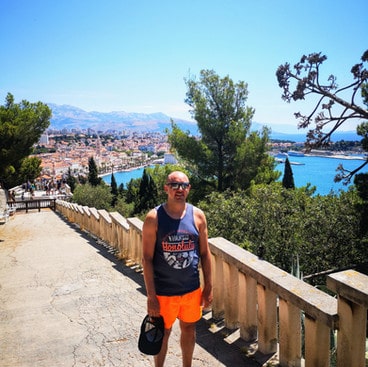
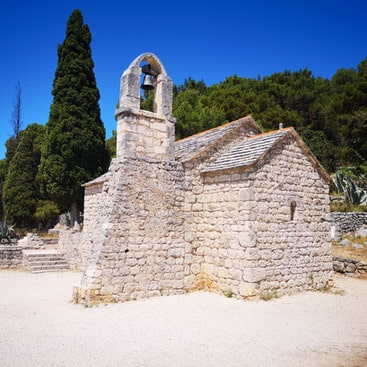
Walking up more steps to St Nicolas Church
From St Nicholas church, it is more of a hike to reach the Telegrin lookout, but the view from the top is worth it! After you’ve caught your breath and taken in the 360 degree view, you can either retrace your steps back down to the city or explore the forest park a little more.
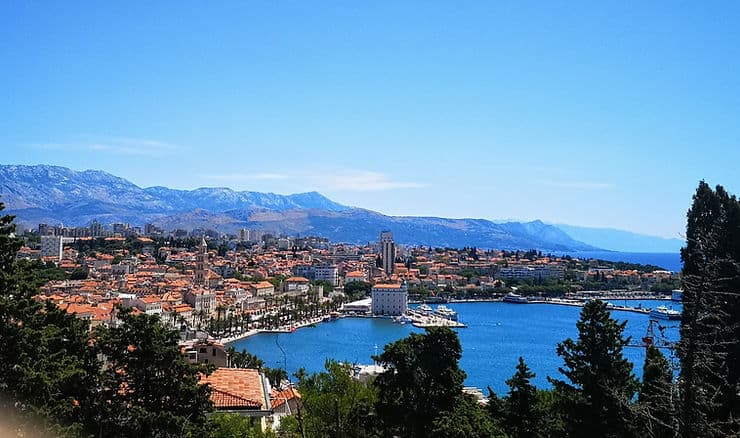
If you want a bit more of a walk, from the Telegrin lookout, you can make your way through the forest park, down to Kasjuni beach. Leaving Telegrin lookout point, follow the main road through the park, using the hiking trails parallel to the road until you reach St Jereome Church. Behind the church you’ll see the Hermitage caves – small cave-dwellings built into the cliffside.
From here, simply follow the path downhill, heading towards the sea and eventually following signs for Kasjuni beach. If you’re doing this walk, i’d recommend downloading an offline map of the area from google as it is easy to get lost or go the wrong way.
After you’ve spent a few hours relaxing at Kasjuni beach, you can either walk back along the main road to Split’s marina, through the upscale residential area of Meje, or jump in a taxi.
The Marjan forest park is a gem within Split, where the hustle and bustle of the city feels miles away. It is definitely one of the best things to do in Split, and the views from the lookout are unbeatable.
4. Visit Split’s beaches
Split has several great beaches, so once you’ve had enough walking around the old town, head to one of Split’s beaches to cool off and relax.
Kasjuni beach
Kasjuni beach is in the affluent neighbourhood of Meje, surrounded by the Marjan forest Park. it is one of the most beautiful beaches in Split, and worth a visit. As I mentioned above, you can walk to Kasjuni beach from Marjan Hill, but it is also accessible by a short car or bus journey from Split centre. The pretty pebble beach is one of the nicest beaches in Split and therefore it is very popular.
The car park is small and gets very busy, so bear that in mind if you are driving. At the entrance to the beach, there are a couple of lounge bars where you can grab some lunch or drinks, but there are no shops nearby. The beach is very busy and can get a little crowded but the further you walk from the bars, the more chance you have of finding a little spot. The water here is beautifully crystal clear, although the pebble beach is very tricky to get in and out of the water, so water shoes are highly recommended!
Bacvice beach
Located on the other side of the ferry and cruise port, this beach is closer to the city and therefore more accessible, but definitely not as pretty as Kasjuni beach. The other draw with this beach is that it is a sandy beach and the water is shallow. There are also several bars and restaurants that line the far edge of the waterfront, past the beach.
Firule beach
You can walk from Bacvice beach, along the waterfront, past the lively bars to Firule beach. This sandy beach is much quieter than Bacvice beach and has just one low-key cafe on the edge. Perfect if you are looking for a more relaxed vibe.
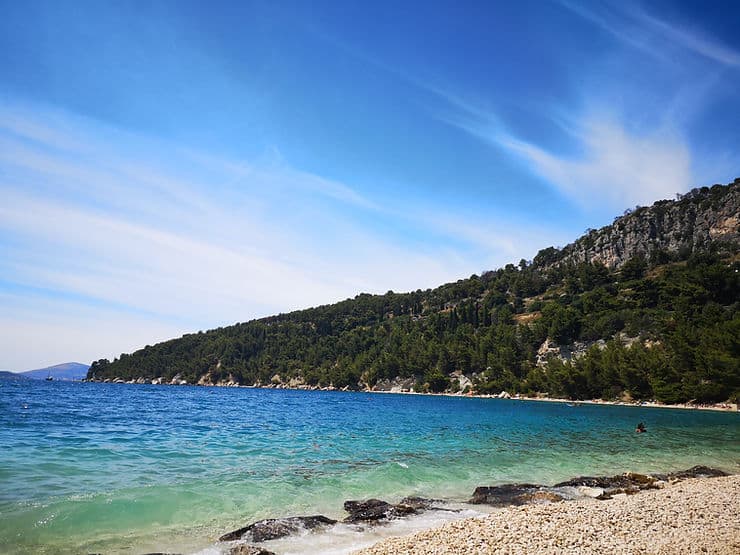
5. Take a day trip from Split
As I mentioned at the start, Split is very well connected for travel to and from the city, by bus, rail, air and boat. This means that it is a great place to base yourself to explore the surrounding area with day trips. Here’s some of the best places to visit on a day trip from Split:
Hvar
Hvar is one of Croatia’s most popular tourist islands and the proximity from Split makes it perfect for a day trip. There are a couple of different companies that run crossings from Split to Hvar. We went with Jadrolinija as it was slightly cheaper and only 10 minutes longer, at just over an hour each way. The ferries run regularly throughout the day, with the last one leaving Hvar at 9.30pm back to split, meaning you can spend the entire day here. Read my blog post on spending a day in Hvar Town.
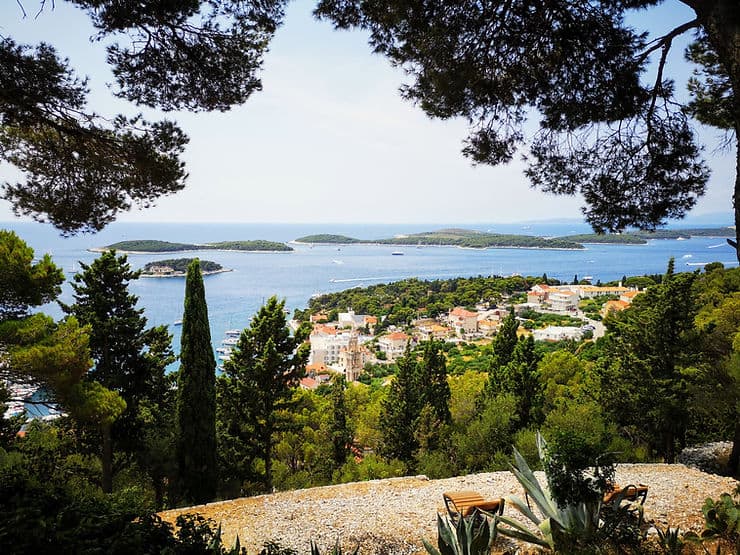
Brac
Another of Croatia’s most popular islands, Brac can be easily reached by Jadrolinija ferries. The ferry from Split will take you to Supetar on Brac Island, which is a small resort town set around a pretty harbour. One of Brac’s most well-known features is Zlatni Rat, a horn shaped golden sand beach close to the tourist resort of Bol. However, this is located on the other side of the Island, so it may be difficult to visit this in a day trip.
Trogir
Like many places in Croatia, parts of the town of Trogir have been designated a UNESCO heritage site due to the number of historical sites. Trogir is only 17 miles (27 km) from Split and can be reached by taxi, car or bus. Enjoy a perfect day out, wandering the town and enjoying a lazy lunch by the waterfront boardwalk.
Krka National Park
One of Croatia’s most visited national parks, Krka is just 1 hour 30 minutes from Split. It is easy to get to, making it a popular choice for a day trip from the city. There are many companies which offer organised trips to Krka national park, however if you prefer, you can hire a car for a day. Driving in Croatia is easy and the roads are good quality. If you hire a car for a few days, another great option is to drive to Krka for the day, then afterwards continue onto the town of Zadar and spend a few days there.
If you’re planning a trip to Croatia, I hope this has inspired you to spend a couple of days enjoying Split, rather than just passing through. Split really does have a lot to offer – with historical buildings, beaches, a forest park and within easy reach to other places of interest.
And, after a busy few days in Split, head just 1 hour south, to the gorgeous coastline of the Makarska Riviera, for a few days of relaxation.

